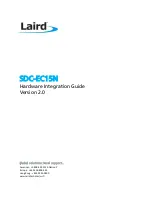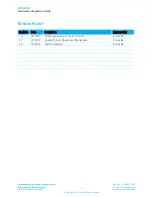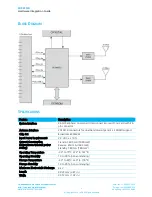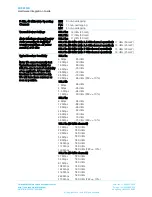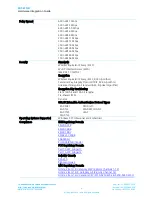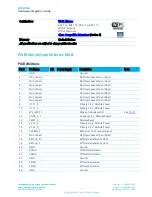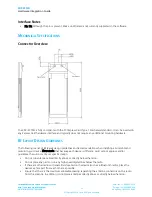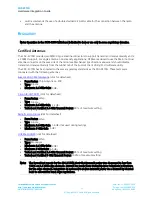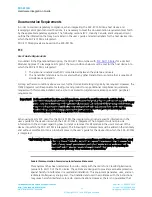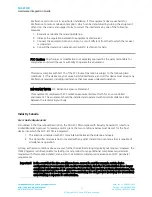
SDC-EC15N
Hardware Integration Guide
Embedded Wireless Solutions Support Center:
http://ews-support.lairdtech.com
www.lairdtech.com/bluetooth
11
© Copyright 2015 Laird. All Rights Reserved
Americas: +1-800-492-2320
Europe: +44-1628-858-940
Hong Kong: +852 2923 0600
Laird recommends the use of a double shielded 32 AWG cable for the connection between the radio
and the antenna.
R
EGULATORY
Note: Operation in the 5150-5250 MHz band is limited to indoor use only in some regulatory domains.
Certified Antennas
The SDC-EC15N provides two MMCX type antenna connectors to support transmit and receive diversity and 2
x 2 MIMO support. For single antenna, non-diversity applications, OEMs are advised to use the Main (not Aux)
antenna connector on the xxxx side of the radio (see Mechanical Specifications above) and should disable
transmit and receive diversity from the Global tab of the Summit Client Utility (SCU) software utility.
The SDC-EC15N has been tested to the same regulatory standards as the SDC-PE15N. These tests were
conducted with the following antennas:
Form Factor: Chip Antenna on PCB
Type: Dipole
Maximum 2.4 GHz Gain: 0 dBi
(click for datasheet)
Form Factor: Whip
Type: Dipole
Maximum 2.4 GHz Gain: 2.2 dBi
Tested and Certified 2.4 GHz Transmit Power: 90% of maximum setting
Form Factor: Whip
Type: Dipole
Maximum 2.4 GHz Gain: 1.6 dBi (not used during testing)
Maximum 5 GHz Gain: 5 dBi
Form Factor: Whip
Type: Monopole
Maximum 2.4 GHz Gain: 3 dBi
Maximum 5 GHz Gain: 6.5 dBi
Tested and Certified 2.4 GHz Transmit Power: 95% of maximum setting
Tested and Certified 5 GHz Transmit Power: 100% of maximum setting
Note: The formal test reports for the SDC-PE15N show that transmit power was decreased to less than
100% on 2.4 GHz edge channels. Summit has made these transmit power reductions in firmware
for the edge channels. Integrators do not need to reduce transmit power on a channel-by-channel
basis to account for band edge regulations.

